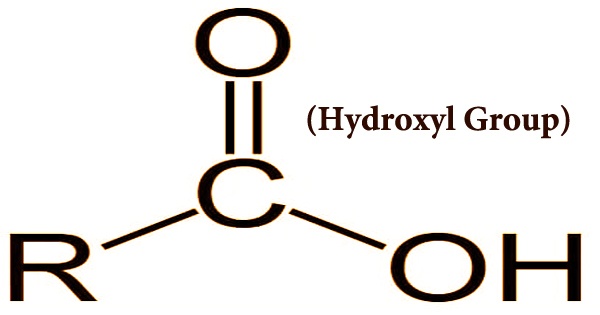Why Action in Copenhagen is Urgently Required?
| The Intergovernmental Panel on Climate Change ( IPCC ) 2007 assessment clearly demonstrated that climate change is already occurring, and that warming greater than 2oC presents a severe danger to human society.Without governmental commitments and immediate action, mankind may loose the ability or methodology to contain warming to below 2oC.(Pic: Little Mermaid of Copenhagen) |
| If we act quickly, we can contain the risks from warming and adapt in ways that are consistent with goals for sustainable growth and development. The technologies required to shift from current high carbon path to a low carbon, climate resilient path are available and the costs are manageable. |
The conferences on global negotiations to reduce emissions reductions dating back from 1995 in Berlin to the one upcoming in Copenhagen come December 2009 are seeking to commit individual nations to collectively meet the scale and urgency of the global challenge, in particular to 17 Gt of emissions reductions versus BAU by 2020, or to contain the rise of temperature with 2oC by year 2020.
Let us follow briefly the chronological developments on negotiations to have a better understanding of the challenges facing each round of negotiation to get this much sought after climate agreement.
COP1 – COP14
The COP conferences have been held in all parts of the world. The first conference was held in Berlin in 1995.
The 13th COP Conference in Bali 2007
| The Bali Conference in 2007 was marked with certain degree of decisiveness, following the IPCC AR4 on climate change. The conclusions on climate change made in this report were less ambiguous, pointing with a 90% certainty anthropogenic greenhouse gas emissions as the primary cause of global warming, impacts such as further rises in temperature, rises in the sea level, heatwaves, droughts, flooding, destruction of ecosystems and the lack of drinking water. ( Pic: Festive celebration in Bali ) |
This ascertains a firm ground for the COP13 conference to reach a detailed conclusions of action known as the Bali Action Plan – also called the Bali Road Map. It calls for quicker action to reduce emissions, and adopts an ambitious plan to reach a global long-term agreement to replace the Kyoto Protocol expiring in 2012, to be signed at the CO15 conference in Copenhagen in December 2009.
During COP13 in Bali, the US was persuaded to join global action to address climate change. however, US was reluctant to commit. At the end of the conference, Papua New Guinea told the US not to block the way if they are not interested to join in the global action!
USA, Australia, Japan and Canada have been repeatedly wanting major developing countriesto make commitments on reduction. On the other hand, China, India and Brazil are arguing that the extent to which they could mitigate climate change will be dependent on the availability of financial resources and technology transfer.
COP14/CMP4 Poznan 2008
At this conference in Poznan, the work towards a new global climate agreement in Copenhagen continued, was marked by anticipated commitments by new US government.
Progress was made on a number of important issues, including the legal aspects and access of Adaptation Fund by developing countries, finance; technology; reducing emissions from deforestation and forest degradation (REDD); and disaster management.
Meanwhile, Fervent Negotiations are On
Developing nations at two-week U.N. talks in Bonn June 2009 outlined emissions cuts of 25% -40% required of developed nations below 1990 levels by 2020. The target cuts have become vital for a deal due to be agreed in Copenhagen in December. European Commission President Jose Manuel Barroso said that the European Union will urge the world to accept a goal to restrict global warming to 2oC (3.6 degrees Fahrenheit). There are signs that the U.S. is moving toward accepting the temperature goal, which it previously refused to do under the administration of former President G. Bush.
| The overriding message from the meeting in Copenhagen is expected to be that urgent action is needed. Scientists and politicians agree that a temperature rise of above 2oC by 2100 must be avoided to void the world of climate catastrophe. But with the rapid rise in carbon emissions, it looks like a mission impossible.The US, under G. Bush administration, did not ratified the Kyoto treaty, in part because the pact demanded no emissions reductions from rapidly developing economies like China, India and Brazil. |
Together, China and the US accounts for about 40% – 50% of the world’s anthropogenic greenhouse gases. As China continues to grow, it could potentially out-pollute the entire world unless it can build its economy around clean energy alternatives, with the much needed help or transfer of technology from the developed nations. It is worth noting that though China’s annual aggregate emissions have now surpassed those of the U.S., China’s energy-related per capita emissions are still 4.5 times less than the U.S. average. While China contributes 8%, the U.S. has contributed a whopping 29% of the world’s carbon past. These figures are clear indicators as to dictate who are the significant GHG emitters.
Beijing, in a paper released by the National Development and Reform Commission at the end of May 2009, urged developed countries to take responsibility for their historical cumulative emissions and current high per capita emissions, to change their unsustainable way of life and to substantially reduce their emissions. “Developed countries should continue to lead efforts to lower emissions after 2012, transfer finance and technology resources to developing countries and promote sustainable development in developing countries.”
“Developing countries’ historical greenhouse gas emissions have been low, and they are the emissions for survival and development.” Therefore China adheres to the principle of “common but differentiated responsibilities” in striking a global agreement on each nation’s emissions reduction; in the course of its endeavor to strike a strategic balance between climate change and national development.
“Common but differentiated responsibilities.” as stipulated in the Kyoto Protocol recognizes the wide range in countries’ historic contributions to climate change, and in their capacities to address it.
Several other developing countries also stressed the historical responsibility of the developed countries in causing climate change and called for the payment of the historical debt owed to developing countries due to their overuse of the carbon space in the atmosphere during their development.
India’s Prime Minister Manmohan Singh, before leaving for the G8 summit climate change talks in L’Aquila, Italy in July 2009, said that India, which has more than 800 million people living on less than $2 a day, will reject any new treaty to limit its greenhouse-gas emissions because that will undermine its energy consumption, transportation and food security. “India will not accept any emission-reduction target — period,” “This is a non-negotiable stand.”
India said that presentations and interventions by developed country are biased: they ignore their historical responsibility; make unsubstantiated projections of likely future emissions from the developing world; create new categories such as ‘ more advanced developing countries’; require that developing countries deliver low-carbon pathways without enabling financial, technological and capacity-building support, and draw unsubstantiated marginal abatement cost curves for even the ‘lower developing countries’.
President Lula of Brazil said Brazil was open to adopting targets for greenhouse gas emissions if rich countries did more to curb climate change. “Rich countries, which are the biggest emitters of greenhouse gases, must do their part,” “What we can’t accept is people who already have their car, a third television, a third house telling Brazilians to remain poor.”
Beijing demanded that developed countries not only commit to a 1% of their annual economic worth to developing countries in climate change mitigation, but also cut their own greenhouse gas emissions by 40% below 1990 levels by 2020.
India is talking to countries such as Brazil, China and South Africa on taking a common stand in international negotiations that richer countries like the U.S. and Britain must reduce their emissions 45% by the year 2020 from 1990 levels.
The U.S. Special Envoy for Climate Change, Todd Stern called the target unrealistic, and the “Clean Energy and Security Act” recently passed in US Congress under B. Obama’s administration, commits only a 17% cut. Latest commitment as implied in the Bonn meeting indicates a down sized 4%! The bill also allows US companies to pay developing countries’ companies to reduce their emissions, instead of doing it themselves.
Japan set a 2020 target of just 8% below 1990 levels. The Japan and US commitment are far below what is needed if we are to address the climate problem seriously.
The European Union who has been more committal all along, meanwhile, has agreed to slash only 20%, half the target requested by China, and is ready to widen the reduction to 30%, with the condition that the 20% is also agreed upon by other developed countries. It is not likely that the US will agree to that.
Developing countries also insist transfer of funds and technology from the developed countries to facilitate their effort of mitigation and adaptation, only to be met by cold shoulders of developed countries.
The common apprehension of every government is that over commitment could compromise economic development, leading to unemployment and socio-economic issues.
COP15 Conference in Copenhagen December 2009
– the upcoming Crucial Conference
The objective of the Copenhagen Climate Conference is to further enhance the full, effective and sustained implementation of the UNFCCC and its Kyoto Protocol and to reach positive outcome, focusing on making concrete arrangements for mitigation, adaptation, technology transfer and financial support related to climate change.
More than 190 nations have been, on many summits and conferences, negotiating a global climate treaty to reduce gas emissions to replace the expiring 1997 Kyoto Protocol limits. Countries plan to wrap up negotiations and sign the new treaty in Copenhagen by late December 2009.
According to IPCC Fourth Assessment Report, current state of climate is primarily the outcome of anthropogenic greenhouse gas emissions by the developed nations during their industrialization and uncontrolled deforestations.
Emissions reduction should not be targeted at the expense of national developments of late comers like China and other fast growing economies like India and Brazil. Why should they be asked to slow down developments because of excessive emissions previously emitted by developed nations. Why should late comers/developers be deprived of their right to speedy development.
China, India and Brazil should not be singled out to over-bear the heavy responsibility of GHG reductions.
ALL parties, including the EU, ( not only US or China), should make a mutually agreeable commitments, fair and justifiable, in the climate change negotiations. Without such considerations of due fairness, the Copenhagen summit is not going to succeed, and global warming is not going to be arrested!
Since climate change is a global concern that requires a global solution, an ideal post-2012 international climate framework must establish fair and binding commitments for all developed and major developing economies, including absolute economy-wide GHG emission reduction targets for developed countries. It is also the ambition of the Danish government who will host the COP15 conference in Copenhagen in Dec 2009, to reach such an agreement.
Presently, parties are divided, emphasis and views are widely divergent over new numbers and new focus. All these, as India put it, are diminishing the thin ice of trust among Parties on the road to Copenhagen. Foreseeably, challenges are numerous and obstacles are near insurmountable.
United Nations Climate Change Conference
On December 7-18, 2009 Copenhagen was host to a conference of the parties to the United Nations Framework Convention on Climate Change (UNFCCC), also known as COP15 Copenhagen. The UNFCCC is an international treaty produced at the Earth Summit in Rio de Janeiro in June 1992 that encourages industrialized nations to cut greenhouse gas emissions. Conferences of the parties to that treaty have been held annually since 1995. At COP3 in 1997 held in Kyoto Japan, the Kyoto Protocol was developed. The agreement set legally binding greenhouse gas reduction targets for 37 industrialized countries. Targets varied according to country, but averaged five per cent over the period from 2008 to 2012. Canada signed the Kyoto Protocol in 1998 and ratified it in 2002. The United States has not ratified the protocol.
Some believe Canada’s Kyoto Protocol targets (GHG emissions reductions by six percent below their 1990 levels by 2012) aren’t achievable or realistic. Canada faces challenges due to its energy resource-based economy, its cold climate and its geography. Others feel trying to achieve these targets would be expensive and potentially damaging to the Canadian economy. A major criticism is that targets are mandatory for industrialized nations, but not for developing countries. And without the United States, the protocol can’t realistically address climate change.
Originally, it was hoped that COP15 would result in a new global climate treaty, but differences between industrialized nations and developing countries on how to combat climate change may preclude such an outcome. While the conference may not result in a new treaty all can live with, Yvo de Boer, executive secretary of the UNFCClC, hopes the conference will at least find agreement on what he calls the Four Essentials:
- How much are the industrialized countries willing to reduce their emissions of greenhouse gases?
- How much are major developing countries such as China and India willing to do to limit the growth of their emissions?
- How is the help needed by developing countries to engage in reducing their emissions and adapting to the impacts of climate change going to be financed?
- How is that money going to be managed?
The Centre for Energy has published a COP15 briefing document called Canadian Leadership in Energy. (3.4MB PDF) This information will help you learn about the unique characteristics of Canada’s energy production and consumption and how Canada ranks on the world stage with other major global energy players. The document also includes information on the value of Canada’s energy exports, our energy relationship with the Untied States and Canada’s CO2 emissions.
We have also summarized key energy facts for Canada, domestically and globally as well as for each province and territory to help you learn about CanadaÕs contribution to world energy and the Canadian economy.
Q: 4: Cop 16
The UNFCCC COP16/CMP6 was held at Cancun, Mexico, between 29 November and 10
December 2010. The COP was preceded by group consultative meetings held between 23
and 28 November 2010, of which Kenya participated in the African Group (25-26 November)
and G77/China (27-28 November) meetings.
The country’s preparation for the Cancun talks spanned the whole of 2010. Initially
(between January and April 2010), the preparations were focussed on a review of COP15
and the Copenhagen Accord documents, in relation to the country’s contribution to the
UNFCCC climate change negotiation process, the country’s interests, and strategic
development partner interests.
During the remaining period of the year, the country prepared specifically on how to engage
in COP16. In this respect, the country actively participated in the preparatory negotiation
processes in Bonn, Germany (June) and Tianjin, China (October/ November) and prepared
negotiating text in line with the African Group and G77/China positions.
In addition, the country participated in preparatory forums under the auspices of the African
Union (AU) and the Committee of the African Heads of States on Climate Change
(CAHOSCC).
Nationally, the Ministry of Environment and Mineral Resources (MEMR) coordinated and
facilitated three national preparatory workshops to prepare the country position paper and
intervention statements (copy attached for ease of reference). The last such meeting was
held in Machakos between 19 and 21 November 2010. A major objective of these meetings
was to compare notes amongst the technical delegates, carryout capacity-building and
prepare the country’s position on the talks.
MEMR drafted the official statement for the High Level Segment for the Minister’s
consideration, which was reviewed and duly signed by the Honourable Minister for
Environment and Mineral Resources (copy attached for ease of reference).
The United Nations Climate Change Conference, Cancun 2010, was hosted by the Government of Mexico and presided over by Ms. Patricia Espinosa, Secretary of Foreign Affairs of the United Mexican States. The Conference was comprised of the following sessions:
• Sixteenth session of the Conference of the Parties (COP 16)
• Sixth session of the Conference of the Parties serving as the meeting of the Parties to the Kyoto Protocol (CMP 6)
• Thirty-third session of the Subsidiary Body for Implementation (SBI 33)
• Thirty-third session of the Subsidiary Body for Scientific and Technological Advice (SBSTA 33)
• Fifteenth session of the Ad Hoc Working Group on Further Commitments for Annex I Parties under the Kyoto Protocol
(AWG-KP 15)
• Thirteenth session of the Ad Hoc Working Group on Long-term Cooperative Action under the Convention (AWG-LCA 13)
The Conference resulted in the adoption of the Cancun Agreements. These are a set of significant decisions by the international community to address the long-term challenge of climate change collectively and comprehensively over time and to take concrete action now to speed up the global response.
The agreements represent key steps forward in capturing plans to reduce greenhouse gas emissions and to help developing nations protect themselves from climate impacts and build their own sustainable futures.
COP 16 – Conference of the Parties
The supreme body of the Convention. It currently meets once a year to review the Convention’s progress. The word “conference” is not used here in the sense of “meeting” but rather of “association,” which explains the seemingly redundant expression “fourth session of the Conference of the Parties.”
Provisional agenda and annotations. Note by the Executive Secretary. Addendum. Additional information on the arrangements for the session
Conference of the Parties serving as the meeting of the Parties to the Kyoto Protocol
The Convention’s supreme body is the COP, which serves as the meeting of the Parties to the Kyoto Protocol. The sessions of the COP and the CMP are held during the same period to reduce costs and improve coordination between the Convention and the Protocol.
Provisional agenda and annotations. Note by the Executive Secretary. Addendum. Additional information on the arrangements for the session
The 2010 United Nations Climate Change Conference was held in Cancún, Mexico, from 29 November to 10 December 2010.[1] The conference is officially referred to as the 16th session of the Conference of the Parties (COP 16) to the United Nations Framework Convention on Climate Change (UNFCCC) and the 6th session of the Conference of the Parties serving as the meeting of the Parties (CMP 6) to theKyoto Protocol. In addition, the two permanent subsidiary bodies of the UNFCCC – the Subsidiary Body for Scientific and Technological Advice (SBSTA) and the Subsidiary Body for Implementation (SBI)– held their 33rd sessions. The 2009 United Nations Climate Change Conference extended the mandates of the two temporary subsidiary bodies, the Ad Hoc Working Group on Further Commitments for Annex I Parties under the Kyoto Protocol (AWG-KP) and the Ad Hoc Working Group on Long-term Cooperative Action under the Convention (AWG-LCA), and they met as well.
The seriousness of climate change, and the penetration of its reality into every nation state and NGO is evident everywhere here in Cancun. As I winged my way from Madison to Atlanta, and then across the Gulf of Mexico to the Yucatán Peninsula I found myself not only shifting geographically from the cold north to a subtropical clime, but also moving to the land of the Maya, whose remarkable civilization remains evident only in some 100 ruins on this projection into the Gulf. A reminder it is of how any civilization should not take for granted a sustained and sustainable future.
Having registered at the Be Live Cancun hotel situated on a narrow strand only a few meters above a beautiful sea, I waited for one of the scores of buses that brought us to the COP16 venue, and engaged a much-tanned delegate whom I found to represent Tuvalu, a Polynesian island country of three coral islands inhabited by 12,000 people and covering a little less than 10 square miles. When I asked him his highest elevation, he replied “4.5 meters”—about 15 feet—with most land no higher than 2 meters. The Mayans, the Tuvaluans—sobering to think of a lost civilization, and another on the edge of extinction! My new-found Tuvaluan friend sat next to a delegate from East Timor who, also troubled, told me that they could at least go to higher elevations as sea levels rose.
Entrance to COP16 was carefully managed, much like security checks at airports, but additionally secured by credentials a good month ahead—but unlike airports with road checks by federal police and municipal police, backed up by some pretty heavily armed military troops and vehicles. Once inside the expansive complex the world changed to one of full trust and comfort. There are well over a hundred exhibits from around the world here—exhibits that completely pass by the misinformation and deception that forms a “debate” in the U.S., but is nowhere in evidence here. My overall impression is that there is a lot of pulling together around the world not only to mitigate climate change, but also to adapt to what clearly is here and is coming.
Most moving to me in this first day was the surprising exhibit by Tuvalu on its “Solar Power Project.” One of their ministers writes, “Our beloved country Tuvalu, nine beautiful atolls, is now faced with the real likelihood that the rising tide caused by global warming may sadly submerge our low-lying nation.” And now, partially funded by Japan, they are now operating its first grid-connected solar power generating system.
This brought me to discover people here who explained the financing of climate-related projects in the least developed societies. France is financing action to combat climate change in Tunisia and Afghanistan. Germany is funding a large International Climate Initiative. There are many more nations engaged in similar financing.
Monday evening my colleague Jim Hurley and I met at one of the big Internet hubs in the grand CancunMesse where we have been hearing presentations from around the world by prominent people and where exhibit booths, together with their articulate exhibitors, provide the richest source of information on climate change one could ever imagine. We had a wonderful buffet dinner, that came “free” with our hotel registration, and debriefed each other as we work to assimilate, integrate, and evaluate all that we had seen and heard.
Q: 8:Jurisdiction of Environment Court.–
(1) Notwithstanding anything
contained to the contrary in any other law, a case shall, in accordance with the provisions of this Act, be directly instituted in an Environment Court for trial of an offence or for compensation under an environmental law, and only that court can take cognizance and hold proceedings for trial and disposal of those cases.
[(2) An Environment Court shall be competent to impose penalty for offences under section 5A of this Act and under any other environmental law, to
confiscate an equipment or part thereof, a transport used in the commission of such offence or an article or other thing involved with the offence, and to pass order or decree for compensation in appropriate cases; and in addition, the said court may in the same judgment make all or any of the following orders keeping in view of the
circumstances of the offence or relevant facts:-
(a) issuing a direction to the offender or other relevant person not to repeat or continue or, as the case may be, not to do the act or to make the omission which constitutes the offence;
(b) issuing a direction to the offender or other relevant person to take such preventive or remedial measures in relation to the injury or probable injury to environment as the court considers appropriate keeping in view of the circumstances of the offence or the relevant facts;
(c) in case of a direction under clause (b), specifying a timelimit and a further direction to submit within the specified time a report to the Director General or other appropriate
authority on the implementation of the direction :
Provided that where a direction under clause (b) or (c) is issued, the person directed may apply to the court within 15 days of the judgment for review of such direction and the court shall, after giving the Director General a reasonable opportunity of being heard, dispose of the application within 30 days after it is made.
[(3) No Environment Court shall take cognizance of an offence or receive any suit for compensation except on the written report of an Inspector or any
other person authorized by the Director General:
Provided that if the Environment Court is satisfied that a person presented a written request to the said Inspector or authorized person to accept a complaint about an offence or a claim for compensation and no action was taken within 60 (sixty) days after such request, and that such complain or claim deserves to be taken into cognizance for the purpose of trial, then the court may, after giving the Inspector or the authorized person or the Director General a reasonable opportunity of being heard, directly receive the complaint or claim for compensation without such written report, or may, if it considers appropriate, direct the said Inspector or the authorized person to investigate the offence or claim.
Trial procedure in Special Magistrate’s Court.- (1) No Special
Magistrate shall take cognizance of an offence except on a written report of an
Inspector :
Provided that, if authorized by the Director General in relation to the institution of a particular kind of case triable by such Magistrate, an Inspector may present a report on such offence directly to the Magistrate without following the procedure prescribed in section 7.
(2) A Special Magistrate appointed under this Act shall follow the procedure for summary trial as prescribed in the Criminal Procedure Code.
(3) A case triable by the court of a Special Magistrate shall be conducted by an Assistant Public Prosecutor or a police officer specified by the
Government or an Inspector of the Department of Environment on behalf of the State.
Q: 5:
There is numbers of NGO who protect the environment. There are:
African Wildlife Foundation (AWF)
Ambiente Ecologico
Asociación Nacional para la Conservación de la Naturaleza (ANCON)
Asociación Oceánica de Panamá (AOP)
Asociación Salvadoreña de Conservación del Medio Ambiente (ASACMA)
Association for Biodiversity Information (ABI) / Natural Heritage Network
Audubon Society
Bahamas National Trust
Caribbean Conservation Association (CCA)
Caribbean Marine Research Center (CMRC) / Perry Institute for Marine Science
Caribbean Natural Resources Institute (CANARI)
Center for International Environmental Law (CIEL)
Water Center for the Humid Tropics of Latin America and the Caribbean (CATHALAC)
Centro para la Conservación y Ecodesarrollo de la Bahía de Samaná y su Entorno (CEBSE)
Centro de Investigación y Planificación del Medio Ambiente (CIPMA)
Patterns and Change in the Amazon Basin
Coalition for Amazonian Peoples and their Environment
Comisión Nacional del Medio Ambiente (CONAMA)
Conservation International
Corporación Defensa de la Vida (CORDAVI)
Cousteau Society
Directorio Nacional Ambiental
Dominica Conservation Association (DCA)
Earth Action
Earth Council
Earth Summit Watch
Earth Times
EcoNet Acid Rain Resources
Ecoweb
EnviroLink
Environment Tobago
Environmental Defense Fund (EDF)
Ethnologue Database
Florida Center of Environmental Studies
Fondo de las Américas
Friends of the Earth International
Fundação Estadual do Meio Ambiente – FEMAGO
Fundación Ambiente y Recursos Naturales (FARN)
Fundación Defensores de la Naturaleza
Fundacion Herencia Verde
Fundación La Salle de Ciencias Naturales
Fundación Natura
Fundación Neotropica (FN)
Fundación Vida Silvestre Argentina
Fundación Vida Silvestre Uruguay
Greenpeace
Greenpeace International
The Healing Forest Conservancy
INPE Environmental Geochemistry
International Union for the Conservation of Nature and Natural Resources (IUCN)
National Parks and Conservation Association (NPCA)
National Wildlife Federation (NWF)
Nature Conservancy
Nevis Historical and Conservation Society (NHCS)
Núcleo de Monitoramento Ambiental (NMA)
The Oceanic Society
Organización para la Educación y Protección Ambiental (OpEPA)
Pantanal – Meio Ambiente
Patagonia Cruzade Foundation
Programa de Conservación de la Biodiversidad de los Bañados del Este (PROBIDES)
PROLANSATE Environmental Foundation
Protection of the Environment Tarija (PROMETA)
Rainforest Action Network
Rain Forest Alliance
RAMSAR Convention on Wetlands
Red Nacional de Acción Ecológica (RENACE)
Regional Environmental Center for Central and Eastern Europe (REC)
Salvanatura
Sierra Club
Smithsonian Conservation & Research Center (CRC)
Smithsonian Tropical Research Institute (STRI)
Sociedad Peruana de Derecho Ambiental (SPDA)
Task Force on the Environment-National Science Board (NSB)
Toledo Ecotourism Association (TEA)
Toledo Institute for Development and Environment (TIDE)
Wildlife Conservation Society (WCS)
Wildlife Society
World Conservation Monitoring Centre (WCMC)
World Environment Center (WEC)
Worldwatch Institute
World Wildlife Fund (WWF)/Conservation Foundation
Worldwide Fund for Nature (WWF)
















